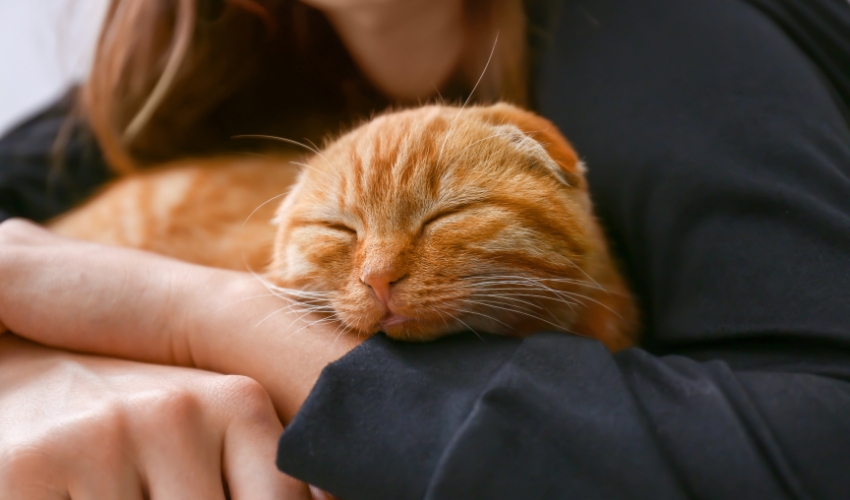Your cat’s poop can tell you many things about its health. Its color, shape, consistency, size, content, and odor can help you determine if something is wrong. Among the conditions that may affect a cat’s poop are intestinal parasites, food allergies, diabetes, kidney disease, and bowel disease. These conditions can affect the cat’s digestive system, making the poop it produces different in appearance than normal. But what does a normal cat poop look like, and what’s not?
Normal Cat Poop
Normal and healthy cat poop is dark brown, has a sausage-like shape, and is generally malleable in consistency. It should not have mucus or blood, and the odor should be minimal. Most cats pass stool once daily in small quantities, although some may pass more or less frequently. A cat with normal bowel function will generally produce similar amounts of stool daily regardless of how much food or water it consumes. Normal cat poop should be easy to scoop out and must leave little to no residue on the ground.
Smaller amounts of loose stool are sometimes seen in kittens since their small bowels are still developing. Kittens usually pee and poo every hour and a half or two hours for the first few weeks of their lives. However, as their bodies mature and their digestive system becomes more stable, they should start going potty once or twice a day.
Abnormal Cat Poop and What It Could Mean
Regularly cleaning out your cat’s litter box makes it easy to notice when something doesn’t look or feel normal in your cat’s poop. Any changes in appearance, odor, frequency or amount of poo your cat produces could indicate something is wrong. Here are some abnormalities to watch for and what they could mean:
Consistency
Hard stool
Hard cat stool is usually caused by a lack of water or insufficient fiber in your cat’s diet. Although hard stool may be expected in kittens, it should not be for older cats. It may also indicate constipation, a condition in which stool is hard and challenging to pass. If you notice a hard stool in your cat’s litter box, give her plenty of fresh, warm water to drink and give her extra fiber in her diet to prevent constipation. If the hard stool persists for over a day or two, it may indicate a medical problem such as diabetes or kidney disease.
Runny or Watery stool
A watery stool can signify diarrhea, a common problem in cats. Diarrhea is caused by an overactive immune system, usually due to an infection or environmental irritants. The mucous membranes in the gastrointestinal tract become inflamed and produce excess fluid, causing diarrhea. Typically, diarrhea is mild and comes and goes over a few days or weeks. If your cat has diarrhea, keep her hydrated with fresh water and check her litter box.
Color
Black poop
Primarily, black poop indicates bleeding in the upper gastrointestinal tract, which includes the mouth, stomach, and small intestine. The digested blood makes the poop shiny black and sticky like road tar. In some cases, black cat poop may also be caused by chronic kidney disease.
Red poop
Red cat poop can indicate intestinal bleeding, kidney disease, diabetes, or ulcers in the digestive tract. Red poop can also be a sign of a bacterial infection of the digestive tract.
Orange or Yellow poop
If your cat’s poop turns orange or yellow, it could indicate diabetes or bile acid secretion disorder. These conditions affect the production of digestive juices in the small intestine, making the stool yellow or orange.
Green poop
Green poop may indicate that your cat has eaten grass or other vegetation. It can also indicate some more serious medical conditions, such as bacterial infection of the digestive tract or liver disease. In most cases, however, green stool is usually harmless and should clear up within a few days.
White Poop
White stool generally indicates a nutritional deficiency or an obstruction in the gut. In some cases, white stool may indicate a foreign object in the digestive tract. However, a white stool should generally not cause concern and will resolve itself without treatment.
Other issues in cat poop

Blood in cat’s poop
There are many reasons for blood to appear in a cat’s poop. The most common causes include gastrointestinal parasites and urinary tract infections. Some types of foreign objects can also cause bloody stool. Older cats are more prone to developing bladder stones that can cause bloody urine and bloody stool. In many cases, a bloody stool is a sign of an undiagnosed illness or infection.
Hairballs
A hairball is the hardened fur that accumulates in the intestines of cats. When digested, the hair turns into a slimy substance passed as feces. The presence of hairballs can be an indication of a severe GI problem. Some more common causes of hairballs are bad grooming habits, food allergies, and prolonged ingestion of stringy materials.
Mucus in cat’s poop
Mucus in a cat’s poop is a common condition that affects many domestic felines. It occurs when the fluid lining of the intestine becomes irritated or inflamed. Although mucus may not be a severe problem in healthy cats, it can be a sign of intestinal irritation and may require treatment if it becomes excessive or frequent.
Conclusion
Over time, it is pretty easy to tell a normal cat poop from an abnormal one. While some abnormalities may resolve on their own in a few days or weeks, it is crucial to take your pet to the vet if any symptoms persist for more than a few days or if other symptoms develop. Remember that your pet cannot tell you what is wrong, so always keep an eye on their stools and call your vet if you spot any abnormal changes.











